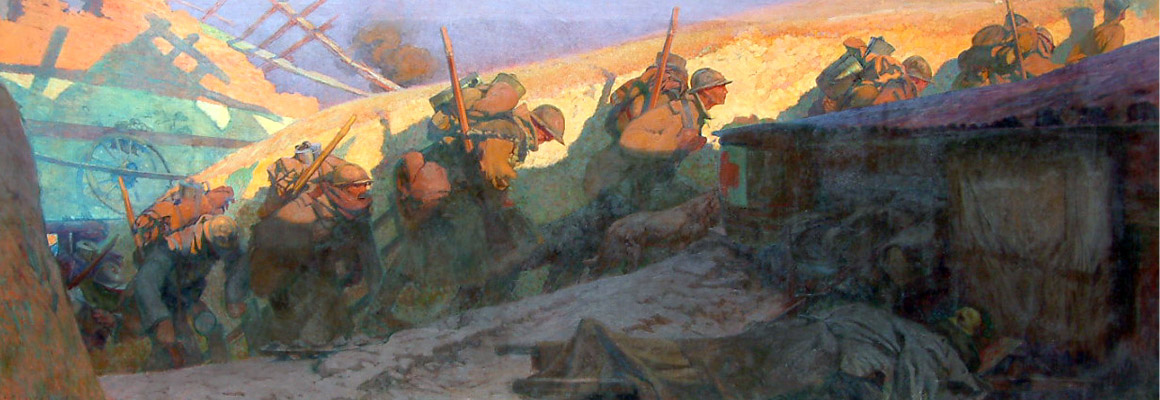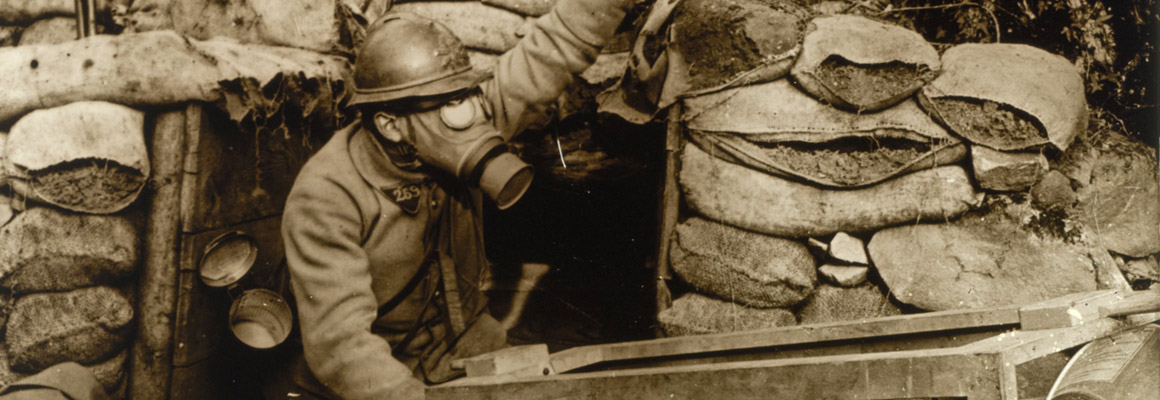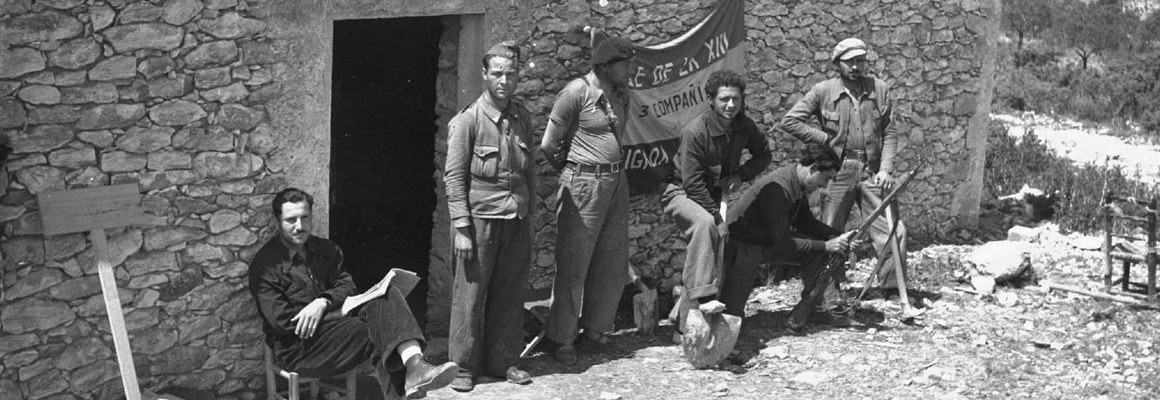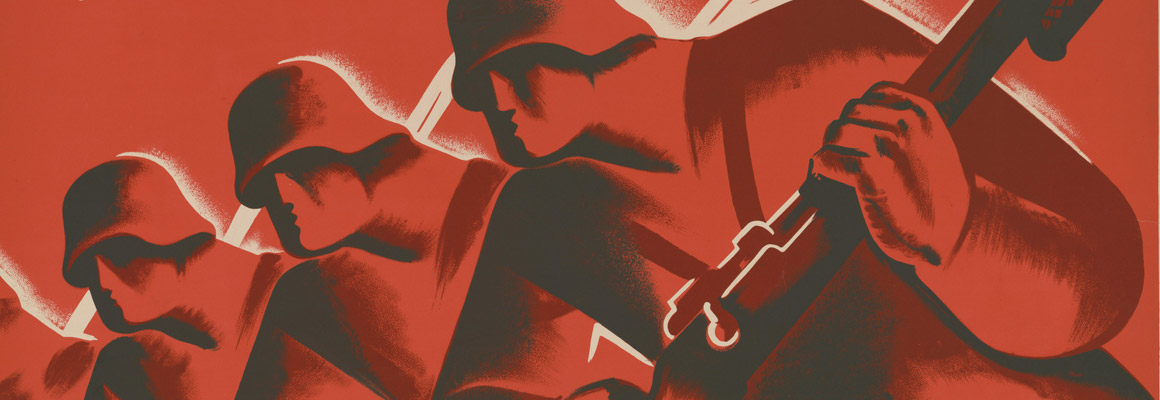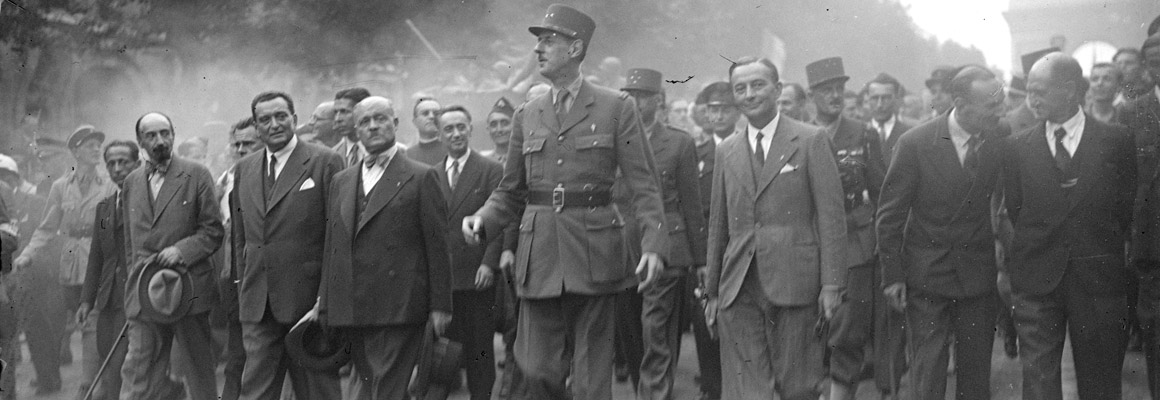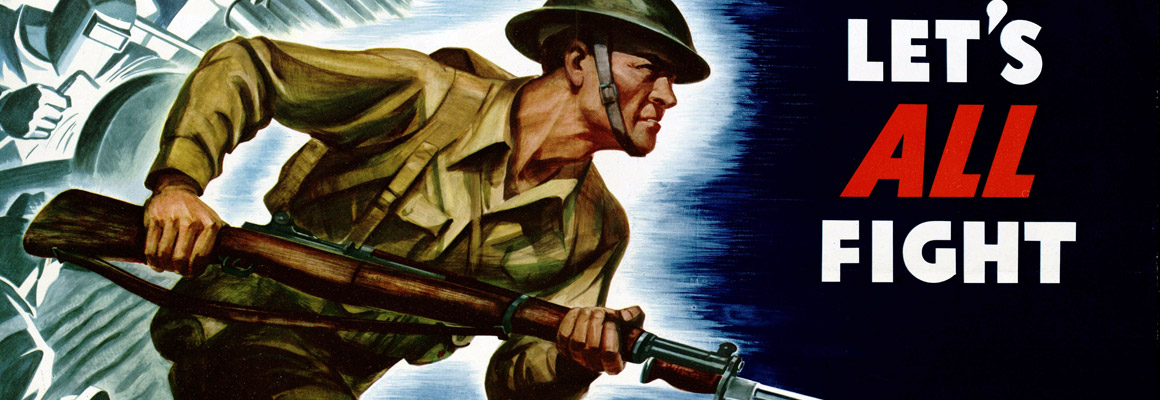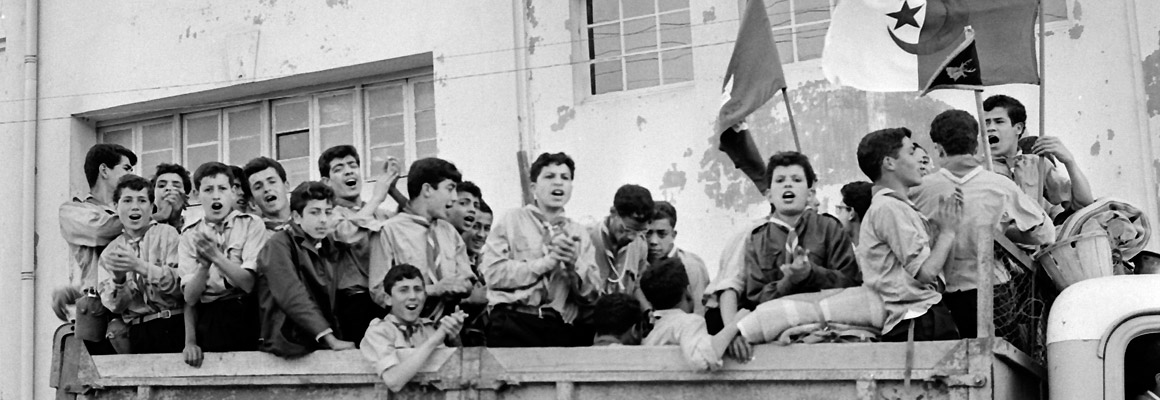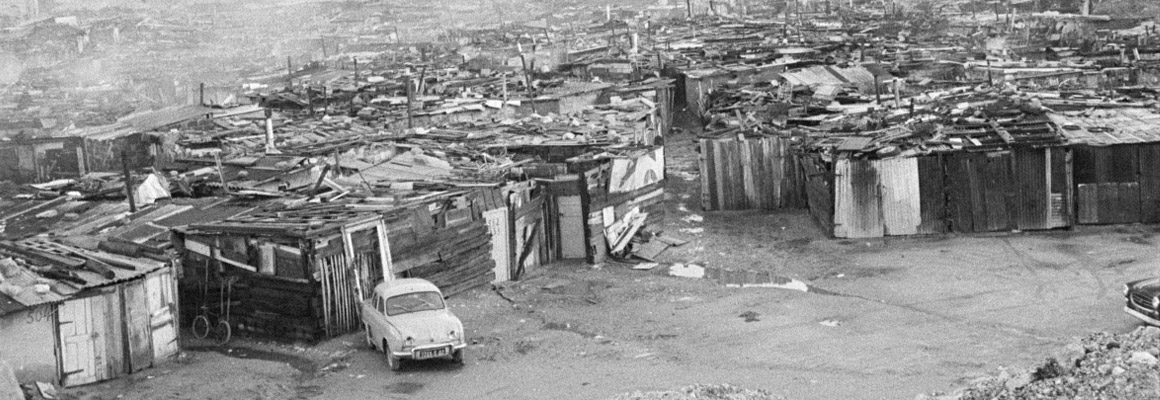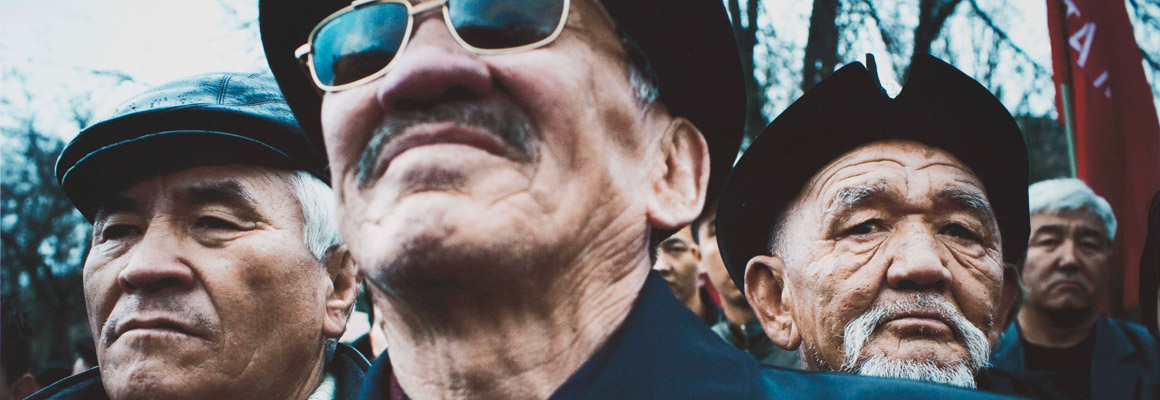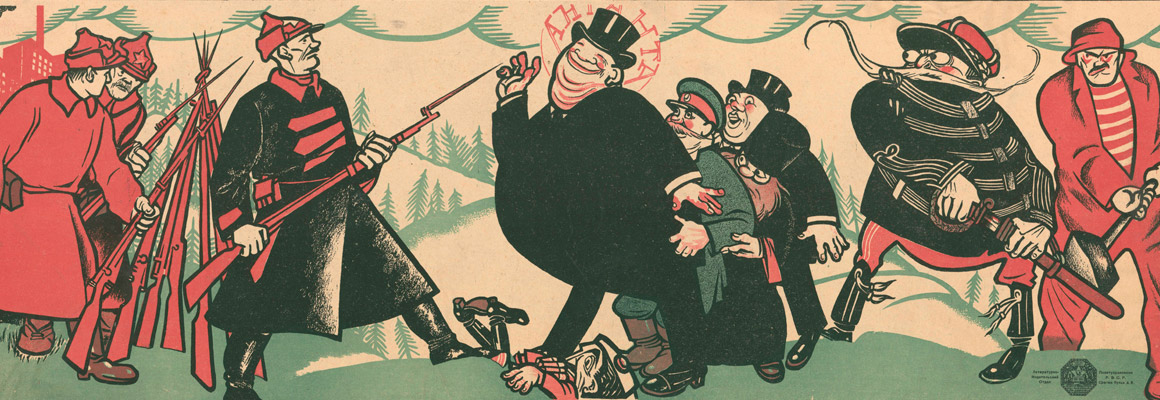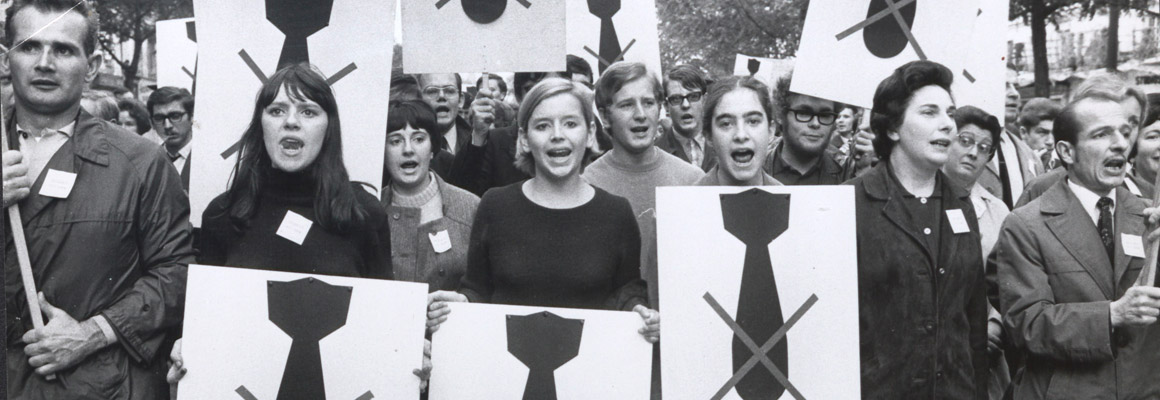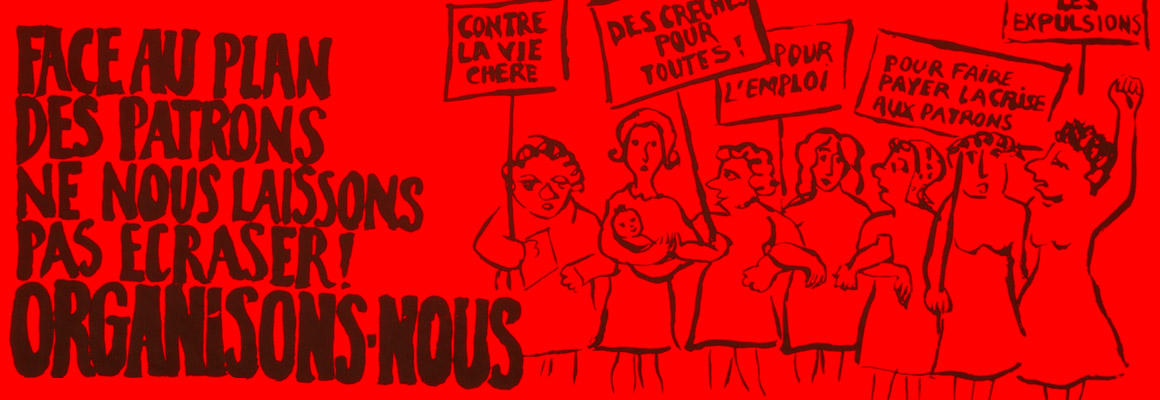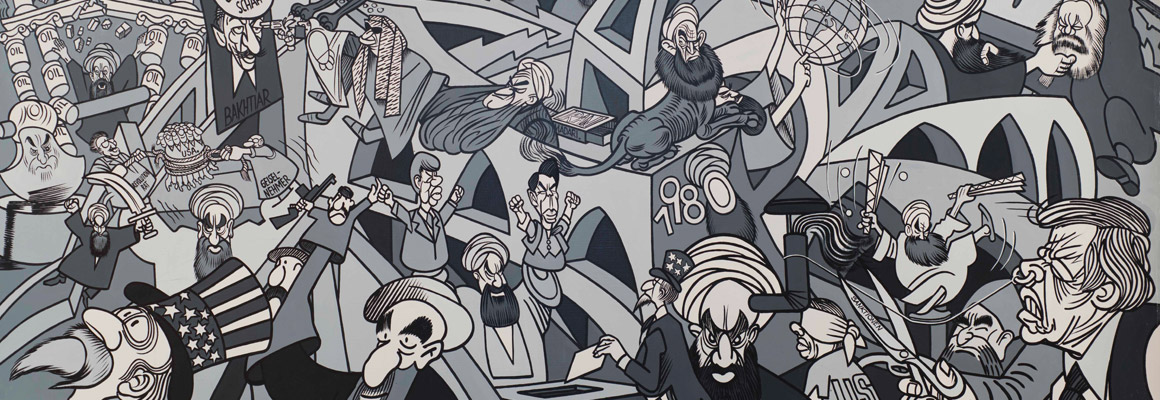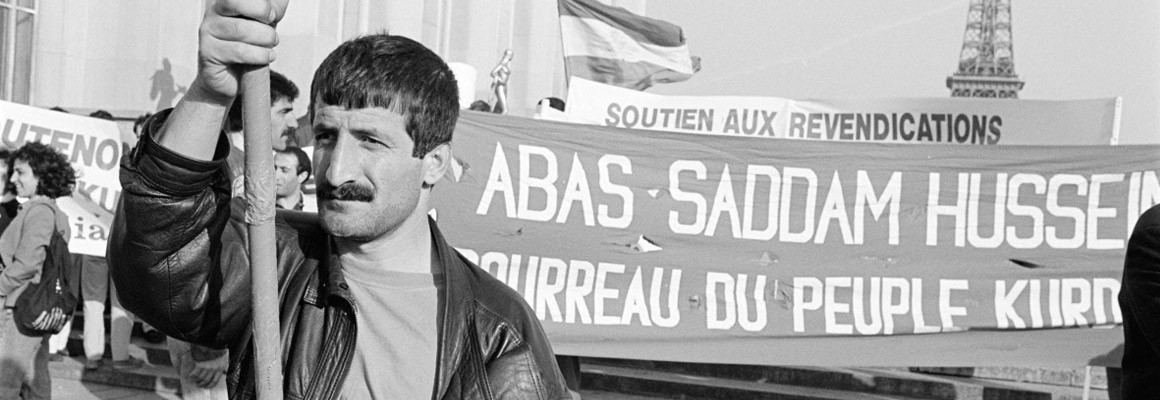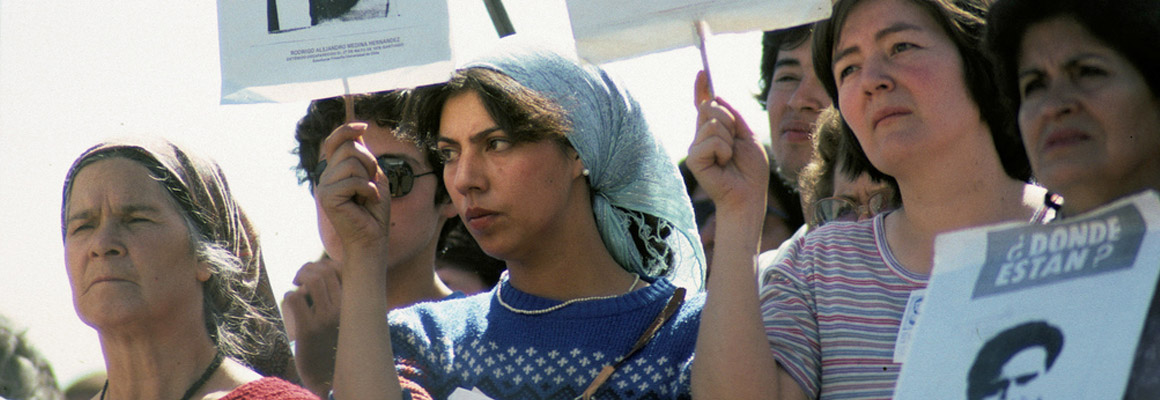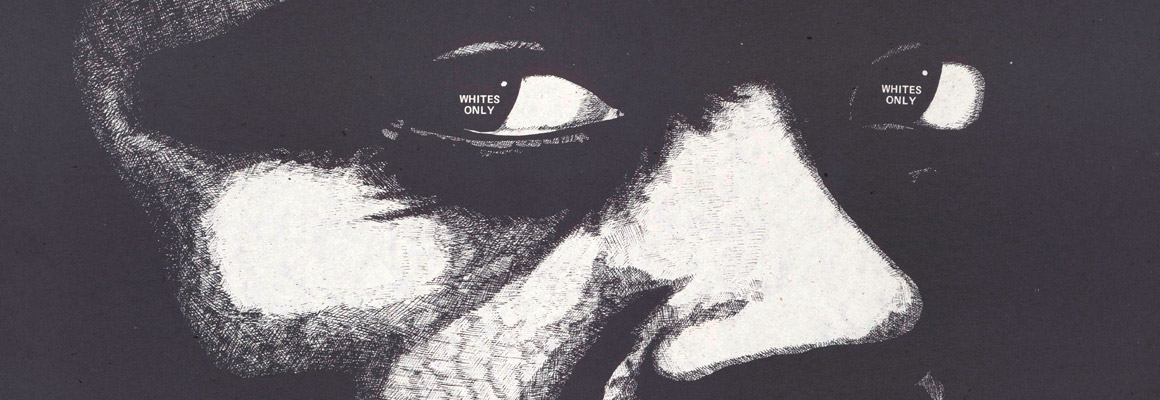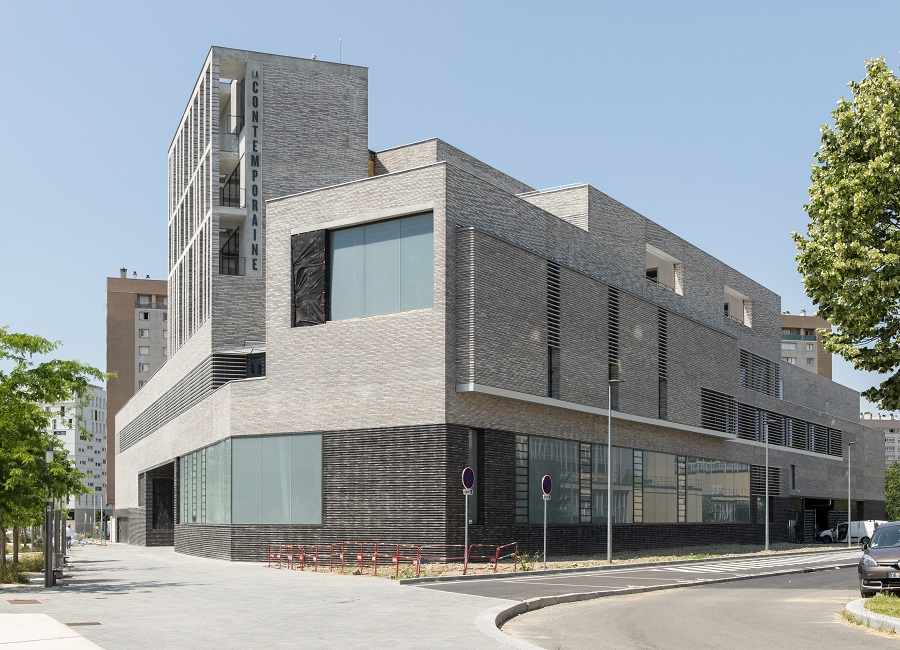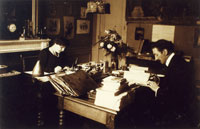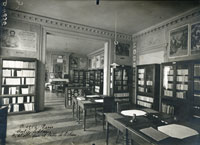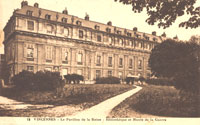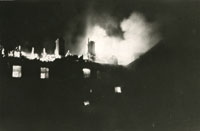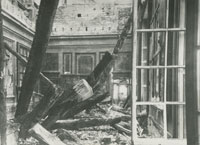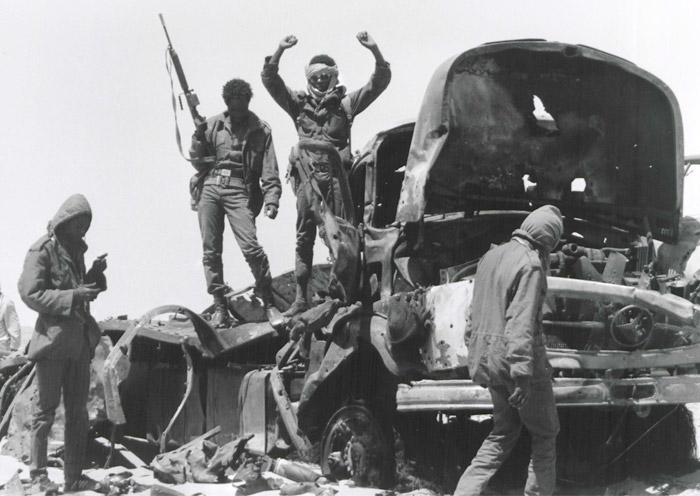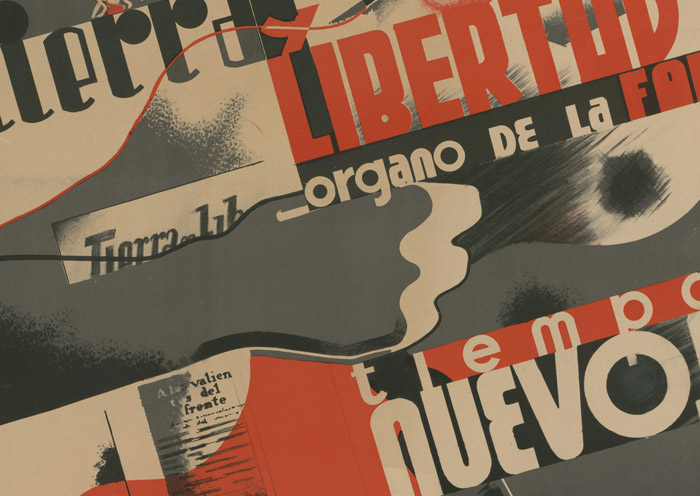Archives
ArchivesFrom its origins La Contemporaine collects, stores and offers its readers Collections of private archives given to La Contemporaine on deposit.
Since the beginning of 1990s, the production of audiovisual archives and oral history adds to this policy.
A “Calames Database” is now available for consultation on the website site of La Contemporaine. The inventories are organized in three large categories:
- The inventories of personal or family archives
- The inventories of communities’ archive (archives produced by a legal entity: association, party or movement, institution, etc.)
- The inventories of collections that La Contemporaine constituted over time thanks to its various departments and by artificially combining documents, may they be in French, in foreign languages or from diverse origins, according to their themes or to their supports. For this last category, 3 big components were defined: World War 1914-1918, World War 1939-1945, Countries and continents
The digitized collections are available for consultation in the
digital library of La Contemporaine.
ConsultationArchives kept in La Contemporaine are freely available for consultation and subject to the laws for privacy.
In accordance with the convention signed with the donor, certain collections are however available for consultation only on dispensation, and a response time will be required.
These rules are specified, in introduction of every online inventory.
Audiovisual
Audiovisual collections and oral historyThe audiovisual collections cover the internal life and the foreign policy of States in 20th and 21th centuries.
Collections consist of about 7 500 documentary units of French and foreign origin: France, Algeria, Spain, the United States, Hungary, Italy and Poland…
- Filmed news, documentary and fiction movies
- Rushes of journalistic movies and documentary
- filmmakers
- Private archives and audio files
- Oral history and filmed conversations, stemming from researchers' works and produced by La Contemporaine
Audiovisual collections The audiovisual archives, as additional sources for the researchers, are partially produced by La Contemporaine and realized in association with historians.
A part of the collection “Mémoire vivante” gives the floor to witnesses and actors of History. This collection grows rich since its creation at the end of the 1990s and already represents thousands of hours of conversation.
Indeed, these Archives Collections are enriched regularly thanks to the work of researchers, to associations and to projects of collection of the oral sources that La Contemporaine sets up with diverse organizations. At the same time, the researcher can also access "rushes", in particular the conversations realized within the framework of the certain documentaries with the agreement of producers and directors.
All these documents are listed in the catalog of La Contemporaine and in
Calames.
They can be viewed in the audiovisual department. Some of them are available for consultation only with the authorization of the authors and by appointment.
A part of the audiovisual collection is kept by La Contemporaine
- The collection Pétain: 1917-1944
- The Spanish Civil War (1936-1939) and its consequences
- Year 68
- « Mémoire grise à l’Est » : 1985-1995
- Oral History : collection « Mémoire vivante »
Databases
Databases The databases that La Contemporaine presents (bibliographical, factual bases, in complete or multimedia text) are listed in the tab “catalogues” and also in the digital library under the title "
Ressources électroniques".
These resources are available for online consultation in the library’s building by the readers registered at La Contemporaine.
Paintings, drawings, prints
Paintings, drawings, printsLa Contemporaine stores about 30,000 paintings and drawings, 18,000 prints and hundreds of sculptures in its Paris site.
These works reflect the political and social events in France and in the world throughout the 20th century.
Paintings and drawings World War IWWI is the origin of La Contemporaine
From the beginning of the conflict, the founders of the collection, M. and Mr Leblanc, collected works by famous artists such as : Jean-Louis Forain, Théophile-Alexandre Steinlen, Raoul Dufy, Francisque Poulbot, Lucien Jonas and Fernand Léger.
Then, in addition to their collection, the BCIC brought together works by artists fighting on the front: Maurice Denis, Félix Vallotton, Edouard Vuillard, Jacques Villon, Ossip Zadkine, André Fraye, Jean Lefort, Dunoyer de Segonzac, etc…
Many documents produced by amateurs were also gathered. They show the everyday life in the trenches, devastated landscapes as well as cities in ruins.
WWIILa Contemporaine keeps about 1,000 prints and 2,000 drawings and paintings on the Second World War. This includes works that give a view of deportation camps, of the Warsaw ghetto or the Nuremberg trials.
Contemporary paintingThis collection contains works by Argentinian artists such as Nicolas Rubio (1928- ), French artists such as Maurice Matieu (1934- ), Hervé Télémaque (1937- ), Gérard Fromanger (1939- ), but also by the Italian paintor Sergio Birga (1940- ) or the Icelandic artist Erró (1932- ).
Drawings of press and humorThis important collection shows the political life from the beginning of the 20th century to our days with drawings by Jean Forain, André Galland, Sennep, Raoul Cabrol, Pinter, Siné, Willem, Wolinski, Cabu, Veesse, and also many more contemporary illustrators.
PrintsThe collections of prints represent the strong themes of the French and international conflicts.
The artists: Jean-Louis Forain ( 1852-1931 ), Théophile-Alexandre Steinlen ( 1859-1923 ), René Georges Hermann-Paul ( 1874-1940 ), Otto Dix ( 1891-1969 ), George Grosz ( 1893-1959 ), Paul Nash ( 1889-1946 ), Muirhead Bone ( 1876-1953 ), Frans Masereel ( 1889-1972 ), disclose their particular look on of the Great War.
A rare collection of prints evokes China before the advent of Mao-Tsé-Toung (1930-1947) and the Chinese Civil War (1945-1949). It consists of several hundred wood engravings of Na Wei, Li Tch ' Ouen-Song, and other artists who lived and worked at the time of the events.
A part of these collections can be consulted on the digital library. In certain cases, by respect for the copyright, the consultation has to be done on site.
Photos
PhotosLa Contemporaine’s photograph holdings count over a million documents (paper prints, postcards, photographic albums, glass plates and negatives) and show diverse uses of photography (report, portrait, amateur's photography, propaganda).
They are available for consultation on the spot and by appointment.
A part of these collections is accessible in the
Digital library.
World War IThe Great War is a strong axis of the collections with 80 000 postcards and approximately 420.000 original photos among which:
- The Valois collection
- The collection of the French Army’s photographic section (Section Photographique des Armées), which consists of 538 topographic and thematic albums, 13 large format albums and about 120 000 isolated editions.
The « Identité Judiciaire » collectionPhotographic department of the Paris police: more than 1 000 editions.
Soldiers' albums amateur photographers
The interwar period: 1919-19392500 pictures from various press agencies (safara, ROL, Trampus...) and private collections, including the Popular Front, the Spanish Civil War and the rise of fascism in Europe.
WWIIThis conflict is presented by almost 25,000 prints: photographs from agencies, German propaganda pictures, anonymous photos, reports of Thérèse Bonney, Noël Le Boyer, Rene Gendre, Tony Vaccaro, Julia Pirotte, etc.
Contemporary collectionFrance USSR Collection: 1963-1988
This collection was given to the BDIC by the association France - USSR, and consists of 40 000 color and black and white photographs of the USSR, dating from the 40s to the end of the Brejnev era.
Elie Kagan collection All the photos of Elie Kagan (1928-1999) were given to La Contemporaine by his heirs in 1999: negatives, editions (drawings), contact sheets, and slides.
Committed reporter, Elie Kagan notably photographed the massacre of the Algerians, in Paris, during the night of October 17th, 1961.
Contemporary reports Acquisitions and donations come to regularly enrich the collections with photos of the contemporary world.
La Contemporaine possesses reports of photographers such as: Olivier Pasquiers, Yann Morvan, Stanley Greene, Emmanuel Ortiz, Davide Monteleone, William Daniel, Philippe Vermès, Anne-Marie Louvet, Monique Hervo Jean Pottier, Hubert Dufour.
Please note that the consultations are possible only by appointment with Cyril Burté.
Cyril Burté: 01 44 42 54 92
Posters
PostersBeginning with the Commune de Paris of 1871, the collections of posters cover a large part of the history of the 20th century. They illustrate political and social as well as national and international events, militant actions, propaganda campaigns, pre-election debates, both world wars, but also the Dreyfus affair, the Russian Revolution, the rise of fascism and Nazism, the Spanish Civil War, Maoist China, the wars of decolonization, the women's movements in France, the German ecologists, or even the year 68 over the world.
The works of renowned poster designers such as Abel Faivre ( 1867-1945 ), Jules Grandjouan (1875-1968), Lucien Jonas (1880-1947), Paul Colin (1892-1985), Wilchar (1910-2005) or Henryk Tomaszewski (1914-2005) contributed to the collections as well as these of more contemporary graphic designers such as Milton Glaser ( 1929-), Jean-Michel Folon (1934-2005), Tomi Ungerer (1931-), Zenji Funabashi (1942-), Michel Quarez, Vincent Perrottet or Pierre Di Sciullo (1961-).
These very rich and international collections, were subject to several exhibitions such as "Jules Grandjouan, creator of the illustrated political poster" (2001), "slogans and signs: the Polish poster 1945-2004 "(2005)" and “Affiche-Action "(2012).
In order to enrich its poster holdings, La Contemporaine pursues a policy of purchase and collection, in particular with political parties, labor-unions and associations, particularly during election campaigns.
About the Great War
The Great War collections
Founded by wealthy industrialists Louise and Henri Leblanc, La Contemporaine is the major conservation center in France for WW I collections. In 1914, the Leblancs decided to collect, in their Parisian apartment, all the war documentation possibly available in the belligerent countries: from books, periodicals and archives to iconographic documents and objects.La Contemporaine’s collections are particularly original as they include printed matter and manuscripts, official publications and ephemera (flyers, brochures) as well as primary sources and international scientific literature.
La Contemporaine Great War thematic card index, initiated by Pierre Renouvin, comprises 1 300 000 bibliographic references. As a research tool and in addition to the online catalog, it still is in everyday use represents a source of unending discoveries. Printed matter and archival material are open to consultation in our Nanterre Library premises, or described in our searchable catalogs and accessible via our website.
The iconographic collectionsPhotographs
Postcards
Paintings, drawings and engravings
Posters
Objects
The press & trench journalsIllustrated press
Trench journals
The archives & testimonial literatureCorporate archives & La Contemporaine collections
Soldiers’ writings: letters from “poilus”, Gaston Lavy’s diary
Audiovisual archives
The digital collectionsThe thematic filesA source database________________________________________
The iconographical collections
PhotographsThe Great War is a leading theme of La Contemporaine’s collections, which include 80,000 postcards and approximately 420,000 original photographs related to the subject.
The Valois fondsThe 546 “Valois albums”, containing almost 100,000 photographs, were created by the French army’s photographic section, a public body instituted between May and June of 1915 by the French Ministry of War. From that date on, the government sent photographers or “operators”, first to the different Western fronts and then to the Eastern ones. Their mission was to “shoot everything interesting from a historical perspective (destructions, ruins…), as well as for the topic of image propaganda abroad, the military operations or the constitution of documentary archives”. Organized on the basis of a systematic classification by French department or by theme (aviation, hospitals…), this collection represents an outstanding iconographic and documentary ensemble about the First World War. It is currently being digitized.
Postcards 1914-1918: a popular art formPostcards were not meant to document the conflict, but to convey a picture of the war as it “should have been”. Therefore, in order to produce this “medium” – because of its cheapness and extensive dissemination, it evolved into a major vector of representations among the society of the time –, illustrators and photographs could use a wide register of expressions (comical, patriotic, romantic, informative, pedagogical…). For a postcard to arrive safely in the mailbox, it first had to pass through innumerable filters: patriotic exaltation and self-censorship on the part of the authors and editors, official censorship and the buyers’ tastes. As a result, even if postcards do not give an exact documentary picture of the history of the war, they remain an important contribution to the history of mentalities. In August 1914, everyone assumed that the war would be short. Postcard publishers turned to previous representations for inspiration: military life, photographs, and drawings of maneuvers or of past wars. Indeed it was easier, if needed, to use artists’ views rather than to take pictures directly on the spot. That could explain why, in the beginning, illustrated postcards outnumbered photographs. As the war went on, the illustrated press soon began publishing photo-reportages: they turned out to be a good source of pictures for postcards, in addition to the more or less fanciful representations imagined by illustrators.
Paintings, drawings, engravingsRight from the beginning of World War I, the Leblanc spouses, the founders of La Contemporaine’s collections, gathered over 1,200 original works. Many of them were signed by famous French artists such as Jean-Louis Forain (1852-1931), Théophile- Alexandre Steinlen (1859-1923), Raoul Dufy (1877-1953), Francisque Poulbot (1879-1946), Lucien Jonas (1880-1947) and Fernand Léger (1881-1955). Handed over to the state in 1917, this collection of originals soon expanded thanks to donations or purchases from artists either conscripted or assigned to the Army by the Ministry of Public Instruction and Fine Arts. It includes works by Maurice Denis, Félix Vallotton, Edouard Vuillard, Jacques Villon, Ossip Zadkine, André Fraye, Jean Lefort, Dunoyer de Segonzac…, but also by less well-known names and even by amateurs. Depicting devastated landscapes and ruined towns, these documents are testimonies of everyday life in the trenches.
PostersMass propaganda was instituted from the outset of the conflict. Its role was twofold: inform the population by public notices and placards, and mobilize the rear with posters calling to join the war effort.
ObjectsNearly two-thirds of the collections of objects held by the Museum of
Contemporary History-La Contemporaine are related to the Great War: medals, patriotic china, trench art…
________________________________________
The press & the trench journalsShowing the war: WW I and the illustrated press
In many European countries, the illustrated press reached its peak circulation in
August 1914. French journals such as L’Illustration and Le Miroir respectively sold 250,000 and 600,000 copies a week, and the German satirical magazine,
Simplicissimus sold nearly 500,000. Confronted with such success, dailies like the Petit Journal or the Corriere della Sera also started bringing out weekly supplements, with reader scores sometimes over a million.
Such journals played a major role in allowing the population at the rear to see the war. Two techniques, engraving and photography were used to represent the conflict. Some periodicals such as the Illustrazione Italiana or the Russian Iskri mixed both techniques. Photographs, supposed to convey a sense of reality, were more often used for testimonies. On the other hand, engravings carried narrative scenes (air battles, assaults, the ending of hostilities…) or to showed what the photographer could not shoot, either for technical reasons or because of the dangers incurred. As for nighttime surprise attacks in the no man’s land, shell explosions or assaults, they were mostly covered by the work of engraver’s or illustrator’s. The majority of these journals existed before the conflict, but others, like the Illustrated War News, were born from the wartime context. Demand was very high: the public needed to witness the realities of war. In most cases, journal sales went significantly up and the amount of space devoted to photographs increased, thereby contributing to shape the visual culture of the conflict.
A selection of illustrated journals on Flickr
Trench journalsAt the end of 1914, the war is well set to last. In the trenches, a disquieting routine sets in. As an outlet from the life conditions, a new kind of ephemeral and sporadic press appears: unlikely news bulletins, it is written by soldiers for other soldiers to “amuse their buddies” and fend off depression.
480 titles are currently known. They are mostly the result of rudimentary printing methods and their publishing usually lasted about a year and a half or two years. If the years 1916 to 1917 were more productive, 1918 marked their decline as maneuver warfare began again. In these journals, puns and pastiche co-exist with poems and commentaries inspired by everyday life on the front. Very often, they also convey a bittersweet picture of the prevailing attitude in the rear, a place swarming with shirkers and profiteers. Death is everywhere and often comes up with casual jokes. The “poilus” evoke their dreams freely – military leave, comfortable beds, hot meals, baths, images of women, plonk – but they rarely discuss military or political issues. The main reasons being their prudent self-censorship and also the sheer distrust of the crude brainwashing they had learnt to see through.
________________________________________
The archives & testimonialsLa Contemporaine holds extensive archival collections on the First World War, a greater part of which are referenced in CALAMES.
Corporate archives and La Contemporaine collectionsFor instance, the collections of the Académie de Lille, which belongs to the corporate private archives collections, gives a fairly accurate picture of day-to-day conditions in this area of Northern France in 1920 under German occupation and, also, of the prevailing public spirit. The Bureau d’Études de la Presse Étrangère “Green Boxes” reflect the French intelligence system at the time. As for the documentary files constituted by La Contemporaine, they contain leaflets, brochures and press cuttings on the conflict, classified both by country and by themes.
Writings of soldiersLetters from « poilus »
The soldiers rarely evoke military or political issues, probably out of prudent self-censorship and, also, of sheer distrust of the crude brainwashing they had long learnt to see through. In their letters, they usually avoid self-questioning about the utility of sacrifice and, topics likely to displease military postal censorship. Usually adopting a patriotic tone, they show good spirits to reassure the rear. Most letters are dated and the senders’ identities are generally known. In tone, they do not vary considerably over time, even though, as months elapse in the frontlines, their commitment to fighting tends to weaken. Judging by their remarks, certain soldiers seem to find that time is dragging on as early as October 1914 whereas others keep on writing enthusiastic letters in the spring of 1918. Because of the risk due to postal censorship, few commentaries are made on the political and military situation. However, in periods of crisis like spring 1917, the higher command is sometimes declared to be incompetent: such writings quite obviously broach political issues reaching beyond the strict framework of survival at combat and in the trenches.
Brioulance’s and Morelle’s correspondenceA testimony: Gastion Lavy’s diary“Playing only a very small part in the great tragedy, I have written down on these pages, with no pretense to literature, my modest memories”. Such are the words of Gaston Lavy as he begins his memoirs of the Great War. Born in Paris on the 9th of August 1875, he is incorporated in the 20th Territorial Infantry Regiment of Lisieux in August 1914. He discovers the front in 1915, at Moranville, in the Woëvre Plain, where he lives the monotonous life of a trench digger in a sector still exempt from fighting. After the German offensive at Verdun, he is assigned to the 37th Territorial Infantry Regiment and sent to the Lunévillois. Later on, he manages to get assigned to the 1st Engineers Camouflage Section in Paris where he serves until the end of the war. He dies in
1949. His testimony, Un de la territoriale, is structured as a journal: for each day, it provides a multitude of details on the territorial regiments’ life at the front, including descriptions of air combats, of food, of filth and of the rats, that is to say the soldier’s everyday fare. He also evokes the breachbetween the officers and their men and between the front and the rear that is getting wider after 1916. Written from 1920, the manuscript of Gaston Lavy’s memoirs is abundantly illustrated, in the manner of medieval illuminations, and the narrative is always in relation to the drawings. The result is a remarkable document.
The full version of the diary is accessible via La Contemporaine’s digital libraryAudiovisual archivesAfter the fighting in Bois-le-PrêtreThe reels of this exceptional film were deposited at La Contemporaine in 1953 and restored by the CNC. It was shot by soldiers in the midst of the trenches and it is in no way propagandistic. The spectator is shown startling scenes of the daily soldier’s life and mass death. After the fighting in Bois-le-Prêtre is fully accessible on the Centenary Mission website.
Rushes from Medhi Lallaoui’s film, Poilus d'Ailleurs (“ The Poilus from Elsewhere “)
Using archival footage, Lallaoui’s film brings to life the history and the major role played by tens of thousands of “colonials” from the “ Empire “ as well as foreign volunteers who came to fight in the French army between 1914 and 1918.Describing the conditions of their recruitment and arrival, these rushes contain interviews with infantrymen from the French West Indies and from Africa. Mehdi Lallaoui is currently working on a longer version of his film.
Rushes from Jean-Charles Deniau’s film Les Derniers Poilus (“The Last of the Poilus”)
La Contemporaine now holds the rushes of Deniau’s documentary film, Les Derniers Poilus shot in 2004. At the time of the shooting, the “poilus” witnesses, born between 1895 and 1899, were all very old. Ten interviews were led between the 26th of January and the 7th of February, resulting in about 20 hours of footage, but only seven were finally selected. As for public consultation and scientific exploitation rights in the framework of its activities, La Contemporaine has reached an agreement with film director Jean-Charles Deniau and L'Atelier des Archives, the depository of the original. Extensive documentation by Deniau about the preparatory and post-production work on the project accompanies the digitized rushes: biographical notes on the “poilus”, information about itineraries of the film-making, interview grids, film commentaries and subtitles. The accounts given by these former soldiers shed a precious light on living conditions at the front, on the soldiers’ perception of the conflict and on their personal vision of the Great War. To view, please contact La Contemporaine’s Audiovisual Service
________________________________________
The digitized collectionsFor some years now, La Contemporaine has been leading an extensive collection digitization policy.
Placed under the authority of the French Ministry of Higher Education and containing over 130,000 documents, La Contemporaine’s digital library is one of the major collections of its kind. Thanks to a digitization policy specifically targeting the Great War, a growing proportion of related collections is now online : works of artists, press, personal documents written by “poilus”, etc. Certain collections are entirely digitized – regimental histories, trench journals –, and others – posters, the Valois albums, etc. – are still in the course of being so.
